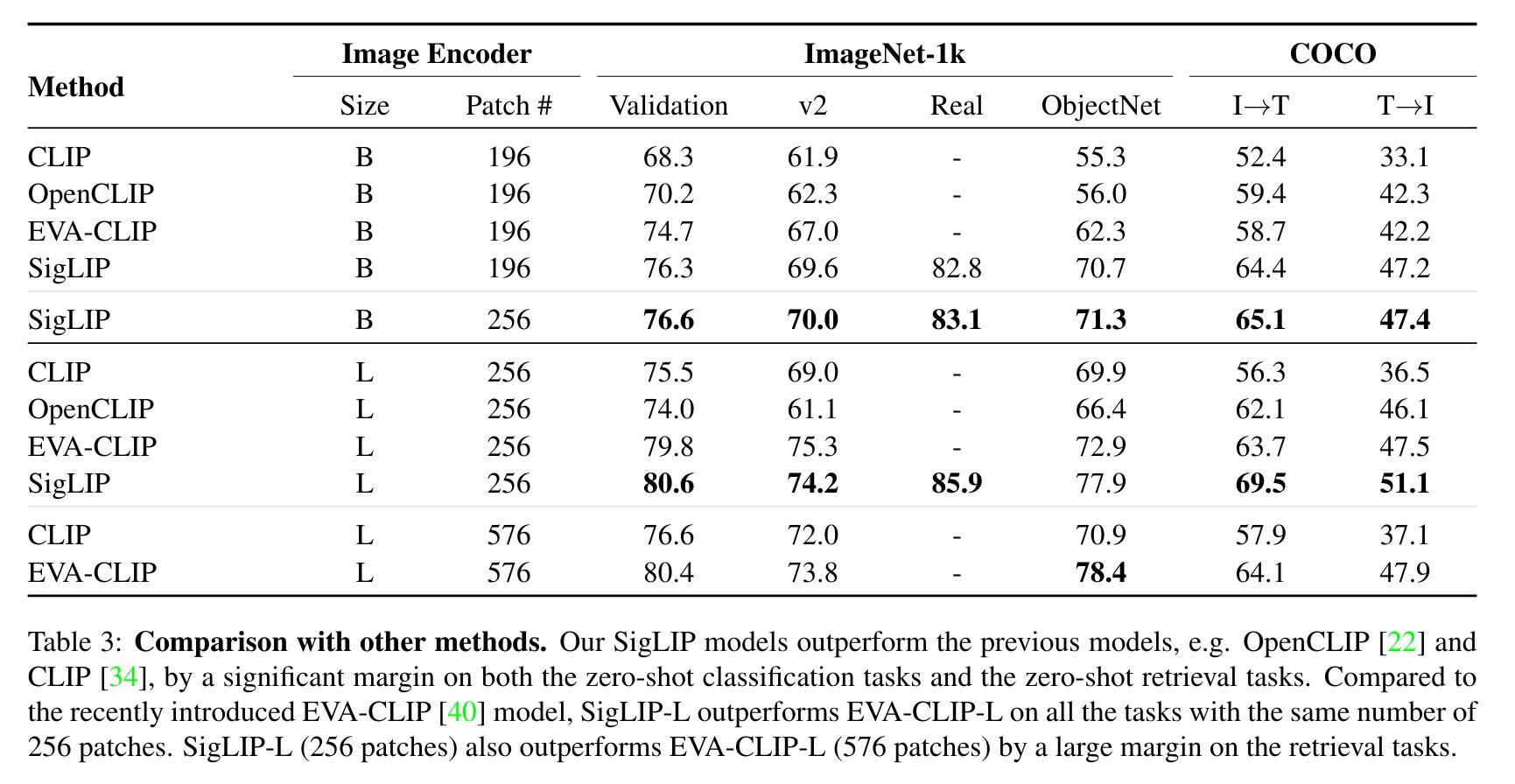🚀 SigLIP (large-sized model)
SigLIP is a multimodal model pre - trained on WebLi at 384x384 resolution. It offers better performance in tasks like zero - shot image classification and image - text retrieval.
🚀 Quick Start
SigLIP is a pre - trained model introduced in the paper Sigmoid Loss for Language Image Pre - Training by Zhai et al. It's based on CLIP with a better loss function.
✨ Features
- Better Loss Function: The sigmoid loss in SigLIP operates only on image - text pairs, enabling further scaling of batch size and better performance at smaller batch sizes.
- Multimodal Capability: Suitable for tasks such as zero - shot image classification and image - text retrieval.
📦 Installation
No specific installation steps are provided in the original README.
💻 Usage Examples
Basic Usage
Here is how to use this model to perform zero - shot image classification:
from PIL import Image
import requests
from transformers import AutoProcessor, AutoModel
import torch
model = AutoModel.from_pretrained("google/siglip-large-patch16-384")
processor = AutoProcessor.from_pretrained("google/siglip-large-patch16-384")
url = "http://images.cocodataset.org/val2017/000000039769.jpg"
image = Image.open(requests.get(url, stream=True).raw)
texts = ["a photo of 2 cats", "a photo of 2 dogs"]
inputs = processor(text=texts, images=image, padding="max_length", return_tensors="pt")
with torch.no_grad():
outputs = model(**inputs)
logits_per_image = outputs.logits_per_image
probs = torch.sigmoid(logits_per_image)
print(f"{probs[0][0]:.1%} that image 0 is '{texts[0]}'")
Advanced Usage
Alternatively, one can leverage the pipeline API which abstracts away the complexity for the user:
from transformers import pipeline
from PIL import Image
import requests
image_classifier = pipeline(task="zero-shot-image-classification", model="google/siglip-large-patch16-384")
url = 'http://images.cocodataset.org/val2017/000000039769.jpg'
image = Image.open(requests.get(url, stream=True).raw)
outputs = image_classifier(image, candidate_labels=["2 cats", "a plane", "a remote"])
outputs = [{"score": round(output["score"], 4), "label": output["label"] } for output in outputs]
print(outputs)
For more code examples, we refer to the documentation.
📚 Documentation
Intended uses & limitations
You can use the raw model for tasks like zero - shot image classification and image - text retrieval. See the model hub to look for other versions on a task that interests you.
Training procedure
Training data
SigLIP is pre - trained on the English image - text pairs of the WebLI dataset (Chen et al., 2023).
Preprocessing
Images are resized/rescaled to the same resolution (384x384) and normalized across the RGB channels with mean (0.5, 0.5, 0.5) and standard deviation (0.5, 0.5, 0.5).
Texts are tokenized and padded to the same length (64 tokens).
Compute
The model was trained on 16 TPU - v4 chips for three days.
Evaluation results
Evaluation of SigLIP compared to CLIP is shown below (taken from the paper).

BibTeX entry and citation info
@misc{zhai2023sigmoid,
title={Sigmoid Loss for Language Image Pre - Training},
author={Xiaohua Zhai and Basil Mustafa and Alexander Kolesnikov and Lucas Beyer},
year={2023},
eprint={2303.15343},
archivePrefix={arXiv},
primaryClass={cs.CV}
}
📄 License
This model is released under the Apache 2.0 license.

